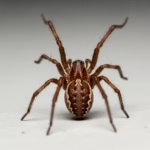Attention-Deficit/Hyperactivity Disorder (ADHD) in children is one of the most prevalent neurodevelopmental conditions in the United States. According to the Centers for Disease Control and Prevention (CDC), nearly 6 million children aged 3–17 years have been diagnosed with ADHD at some point in their lives. This condition can affect academic performance, social relationships, and family life, often requiring long-term support.
Contrary to common myths, ADHD in children is not caused by bad parenting, laziness, or a lack of discipline. It is a legitimate medical condition linked to brain development and function. With the right strategies, children with ADHD can thrive in school, at home, and in their communities.
This comprehensive guide will cover what ADHD in children is, its causes, symptoms, diagnosis process, treatment options, and tips for parents, teachers, and caregivers in the United States.
Understanding ADHD in Children
ADHD is a neurodevelopmental disorder that impacts a child’s ability to regulate attention, control impulses, and manage activity levels. Symptoms typically appear before age 12, but many children show signs much earlier.
While occasional distraction or restlessness is normal for kids, ADHD symptoms are more intense, persistent, and disruptive to daily life.
Types of ADHD in Children
The American Psychiatric Association’s DSM-5 outlines three main presentations of ADHD in children:
1. Predominantly Inattentive Type
- Frequently loses focus
- Easily distracted by surroundings
- Struggles to follow instructions
- Avoids tasks requiring sustained mental effort
2. Predominantly Hyperactive-Impulsive Type
- Constant movement (fidgeting, tapping)
- Talks excessively
- Interrupts conversations or activities
- Difficulty waiting their turn
3. Combined Type
- Displays both inattentive and hyperactive-impulsive symptoms
Example: A child may have trouble paying attention in class and may constantly interrupt peers, making it challenging to succeed academically and socially.
Prevalence of ADHD in the US
- 6 million children (9.8%) have been diagnosed with ADHD
- Boys are more likely to be diagnosed than girls
- ADHD often occurs alongside other conditions like anxiety, depression, and learning disabilities
- Source: CDC – ADHD in Children
Causes and Risk Factors
Although the exact cause of ADHD in children is unknown, research points to a combination of genetic, neurological, and environmental influences:
- Genetic Links – ADHD tends to run in families.
- Brain Structure and Function – MRI studies show differences in brain areas controlling attention and self-control.
- Prenatal and Early Childhood Factors – Exposure to tobacco smoke, alcohol, or drugs during pregnancy; premature birth; low birth weight.
- Environmental Toxins – Lead exposure in early childhood can affect brain development.
Recognizing Symptoms of ADHD in Children
Symptoms vary but generally fall under two categories: inattention and hyperactivity-impulsivity.
Inattention
- Makes careless mistakes in schoolwork
- Difficulty organizing tasks
- Frequently forgets homework or daily responsibilities
- Avoids long or challenging tasks
Hyperactivity & Impulsivity
- Fidgets with hands or feet
- Leaves seat in situations where sitting is expected
- Talks out of turn or interrupts others
- Acts without thinking about consequences
Impact on Daily Life
ADHD can affect multiple areas of a child’s life:
- School Performance – Poor grades, incomplete assignments
- Friendships – Difficulty making or keeping friends
- Family Dynamics – Increased stress at home
- Self-Esteem – Feeling “different” or misunderstood
How ADHD in Children is Diagnosed
There’s no single test for ADHD. Diagnosis involves a multi-step evaluation process:
- Detailed History – Interviews with parents, teachers, and caregivers.
- Behavioral Questionnaires – Such as the Vanderbilt or Conners’ Rating Scales.
- Observation – Evaluating behavior in multiple settings (home, school).
- Medical Examination – To rule out hearing, vision, or other medical issues.
Only a licensed healthcare provider — such as a pediatrician, child psychologist, or psychiatrist — should make the diagnosis.
Treatment Options for ADHD in Children
Effective ADHD management in the US often involves a combination of therapies:
1. Behavioral Therapy
- Parent Training in Behavior Management – Learning positive reinforcement techniques.
- School-Based Interventions – Individualized Education Plans (IEPs) or 504 Plans.
- Cognitive Behavioral Therapy (CBT) – Helps children develop coping strategies.
2. Medications
- Stimulants (methylphenidate, amphetamines) – Most commonly prescribed; help improve focus and reduce impulsivity.
- Non-Stimulants (atomoxetine, guanfacine, clonidine) – Useful when stimulants aren’t effective or cause side effects.
3. Lifestyle and Support
- Healthy Diet – Nutrient-rich foods to support brain function.
- Regular Exercise – Helps regulate mood and energy.
- Consistent Sleep Schedule – Improves focus and behavior.
Parenting Tips for Children with ADHD
- Use Positive Reinforcement – Praise good behavior.
- Set Clear Rules and Expectations – Keep them consistent.
- Break Tasks into Steps – Make large tasks manageable.
- Establish Routines – Predictable schedules reduce stress.
- Communicate with Teachers – Stay updated on progress and challenges.
School Strategies for ADHD Support
Teachers can play a big role in helping children succeed:
- Allow short movement breaks
- Seat the child away from distractions
- Give instructions in small, clear steps
- Provide visual aids and reminders
Long-Term Outlook
With early diagnosis and proper support, most children with ADHD can lead successful, fulfilling lives. Some symptoms may continue into adolescence or adulthood, but coping skills learned early can make a significant difference.
When to Seek Professional Help
If your child:
- Shows persistent inattention, hyperactivity, or impulsivity
- Struggles in multiple settings (home, school, social)
- Experiences emotional distress due to behavior
…it’s time to seek an evaluation from a healthcare provider.
- For more parenting and child health tips, visit Blog Adviser 365.
FAQs About ADHD in Children
Q1: Can ADHD go away with age?
Some symptoms may improve, but many individuals continue to experience ADHD into adulthood.
Q2: Is ADHD caused by too much sugar or screen time?
No. While these can affect focus, ADHD is a neurological condition with multiple causes.
Q3: Can dietary changes help?
A balanced diet can support brain health, but it’s not a standalone treatment.
Q4: What’s the earliest ADHD can be diagnosed?
Symptoms can appear in preschool, but most diagnoses occur between ages 6–12.







